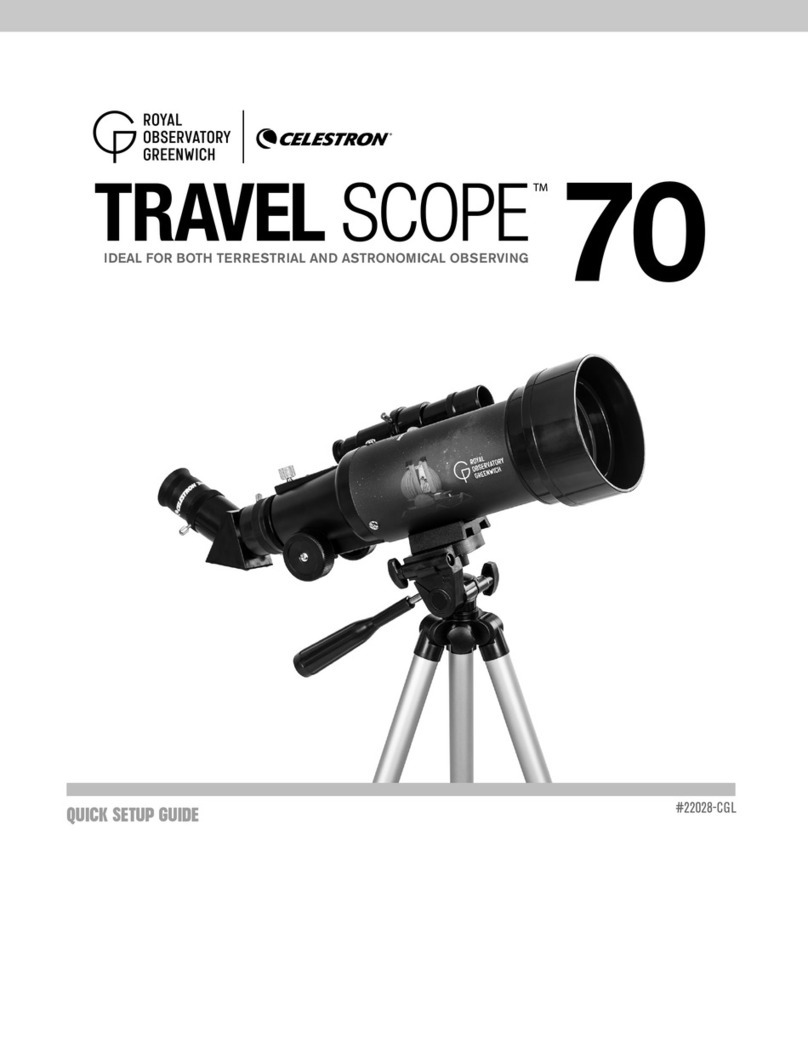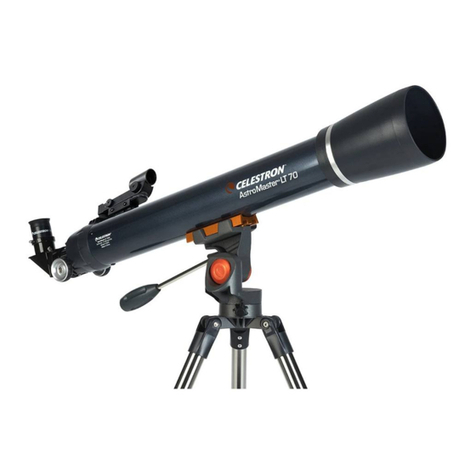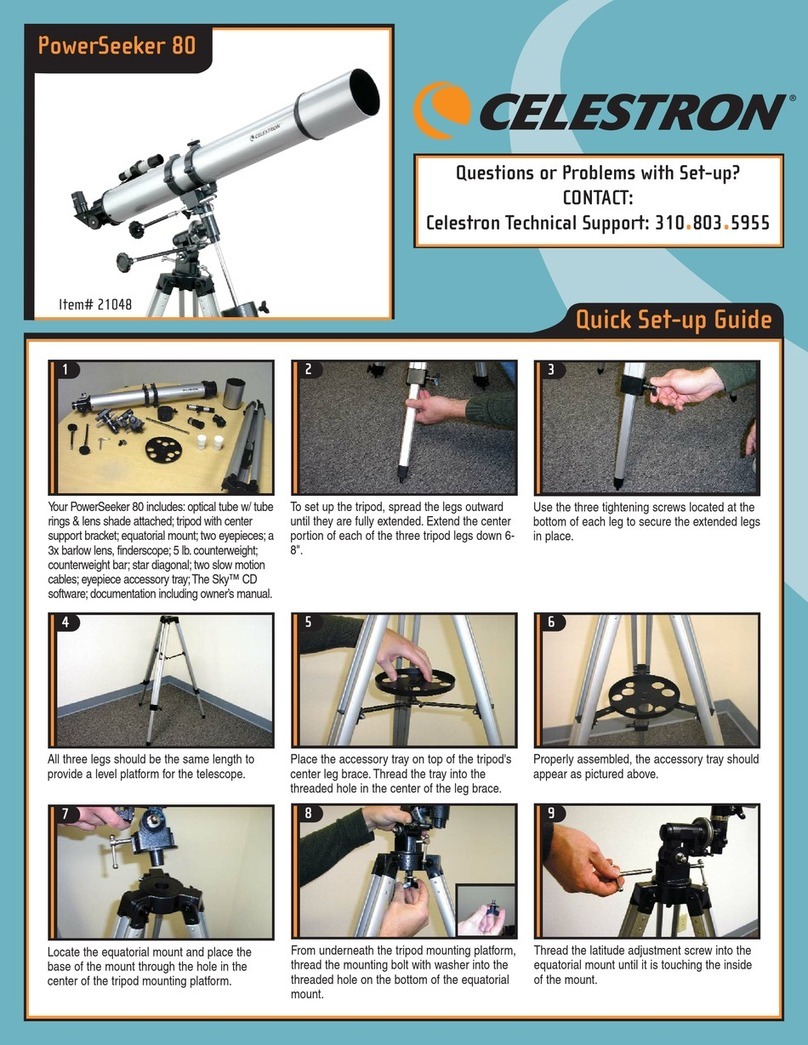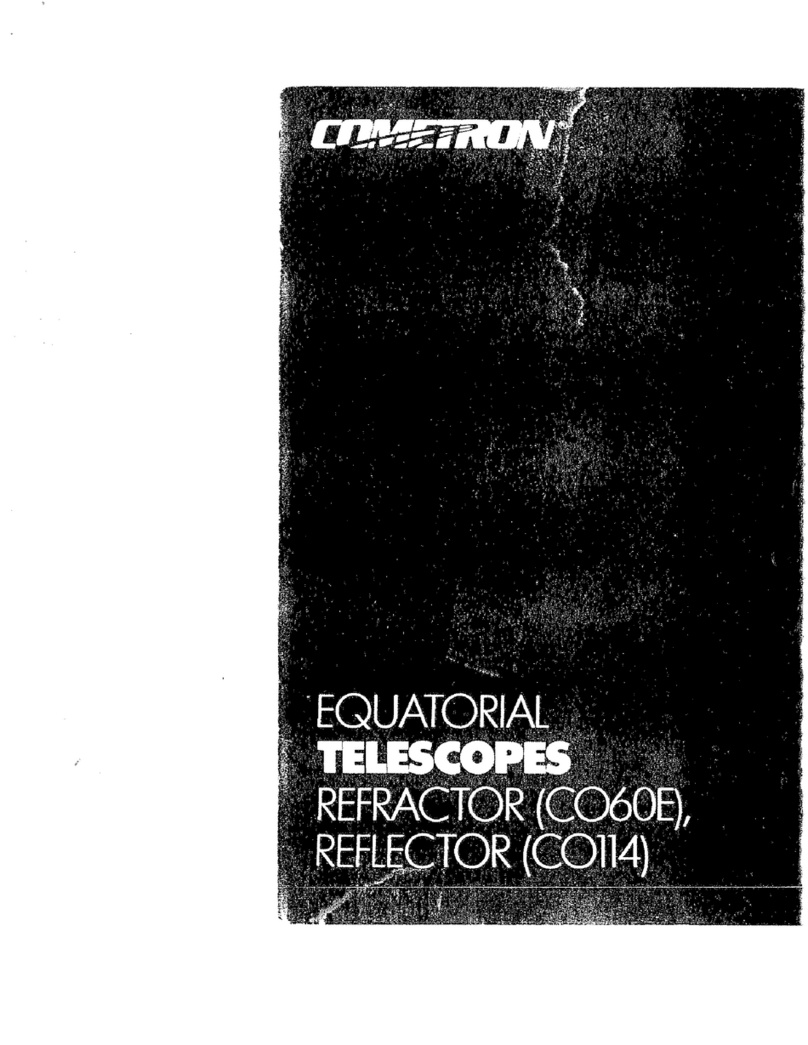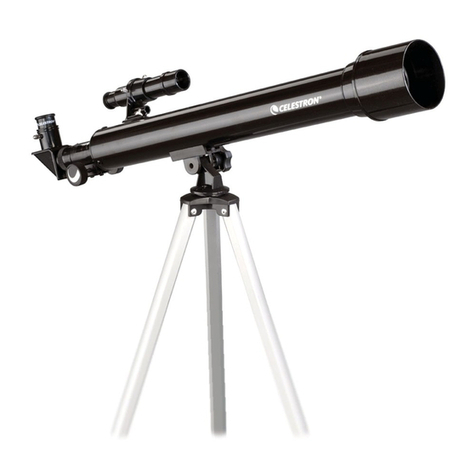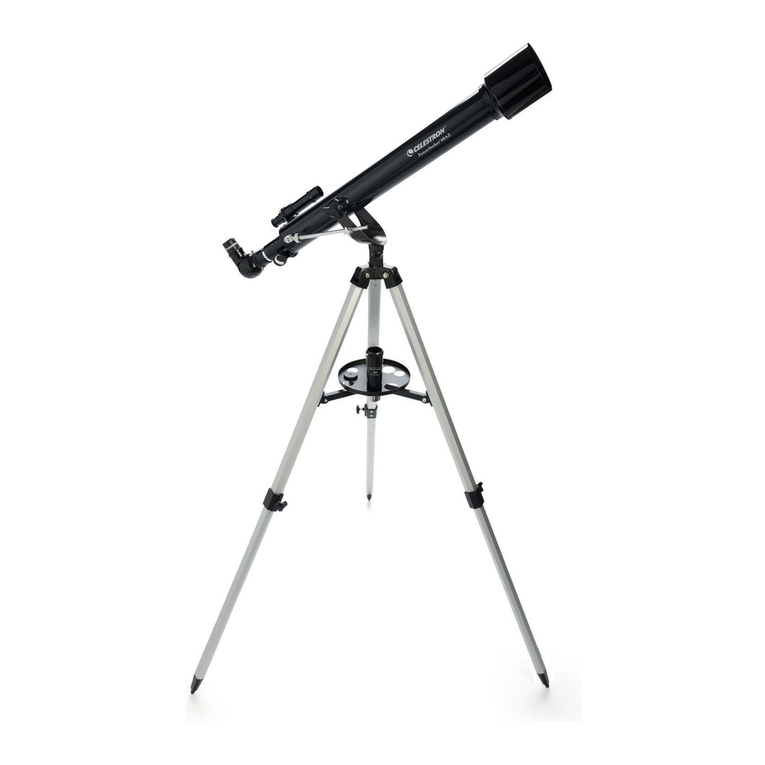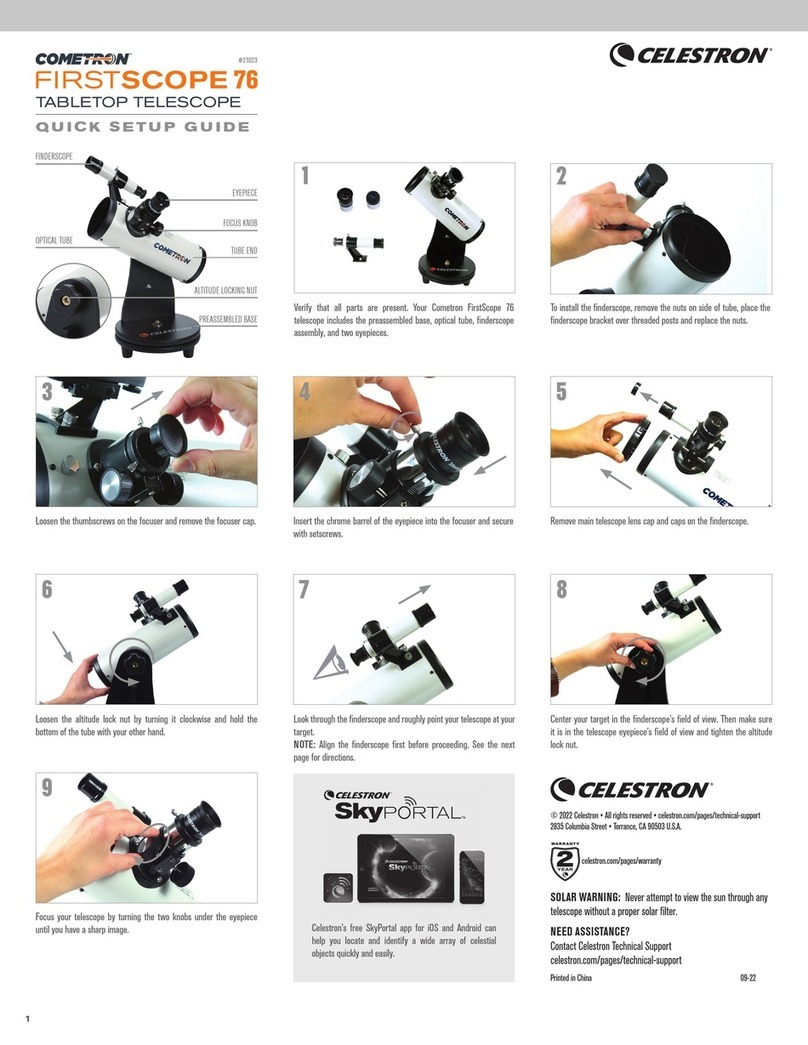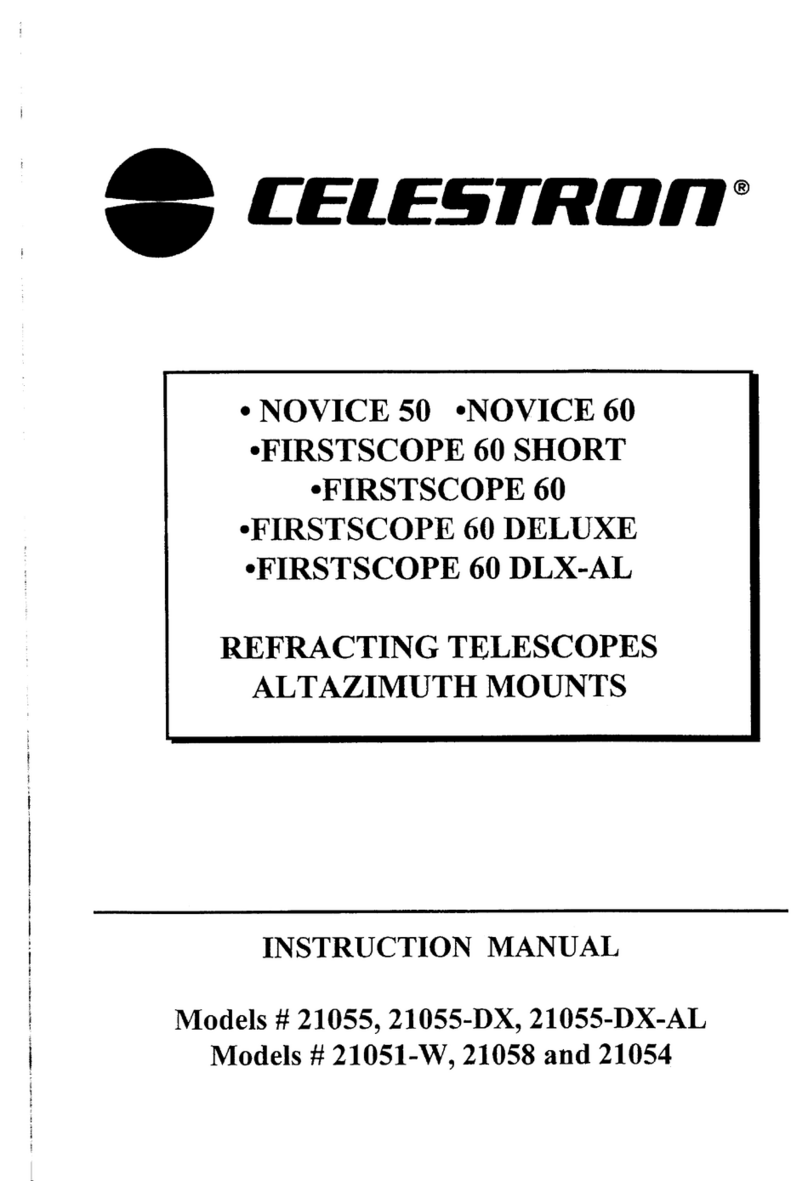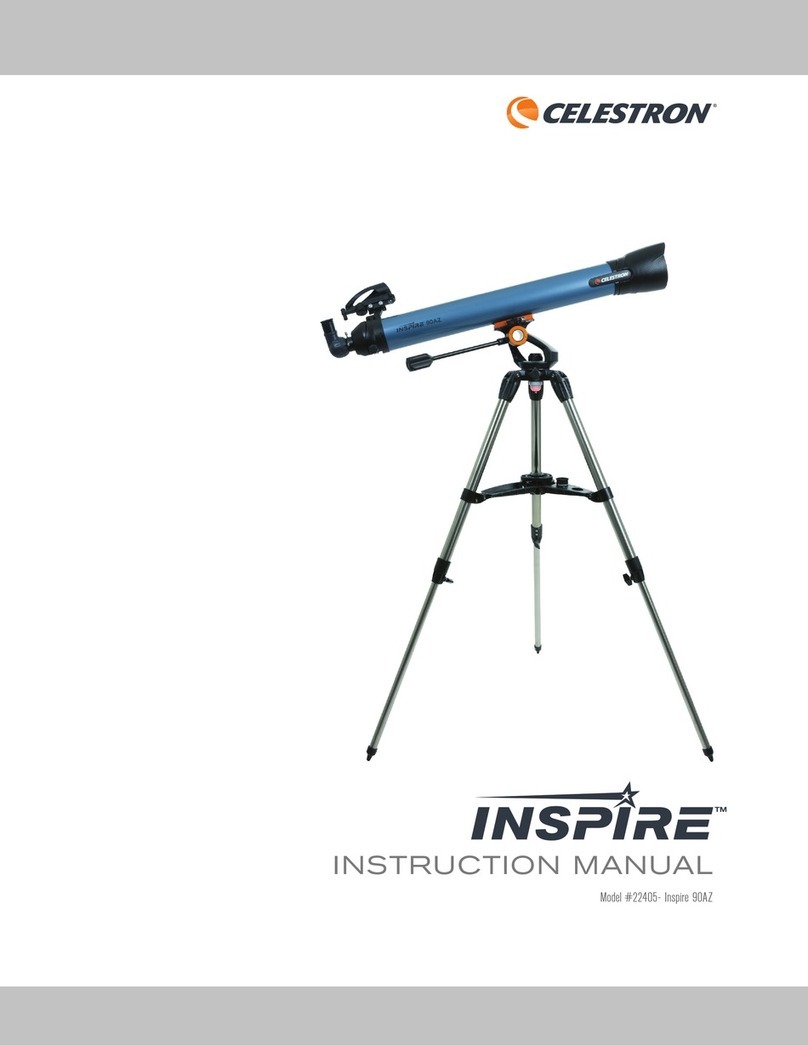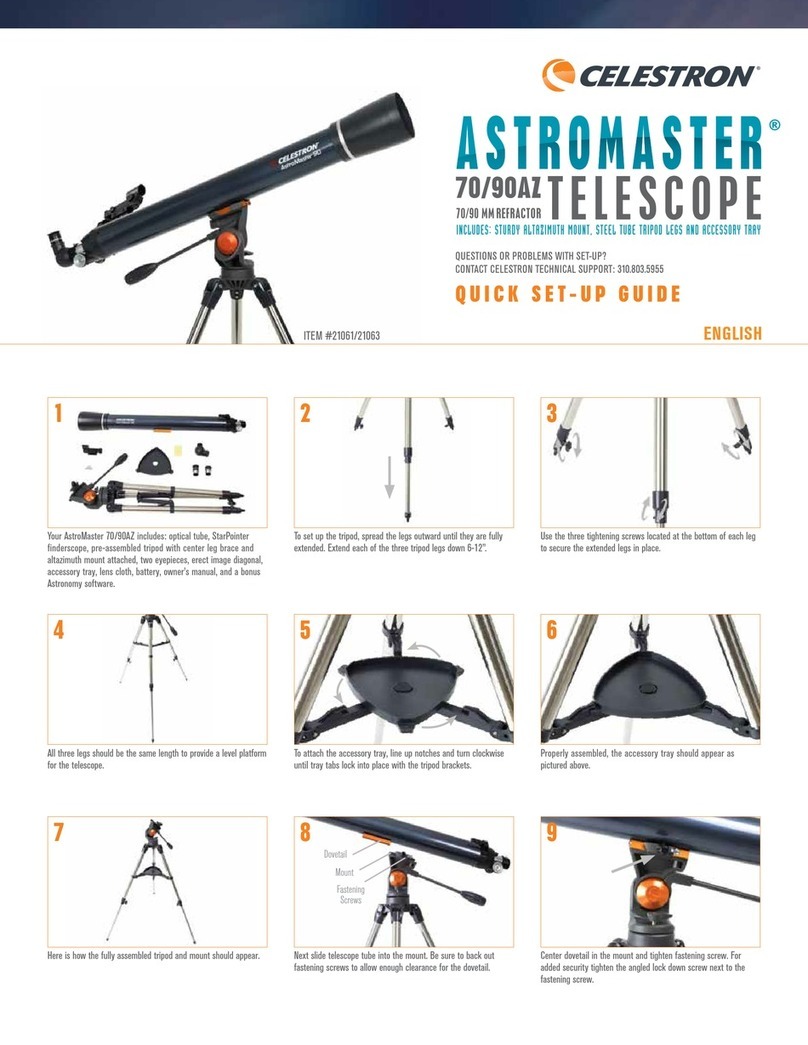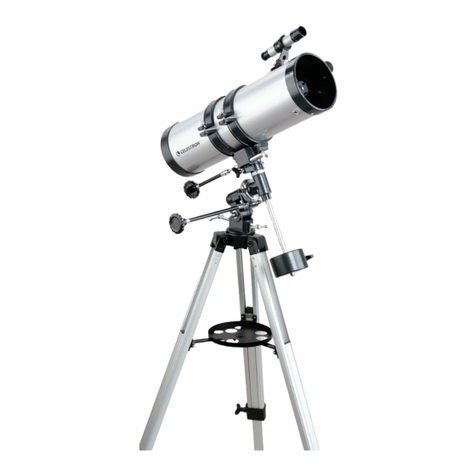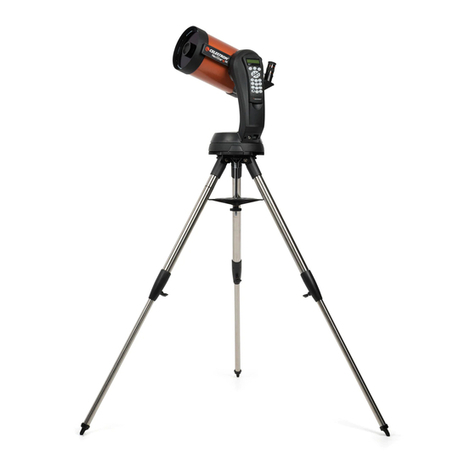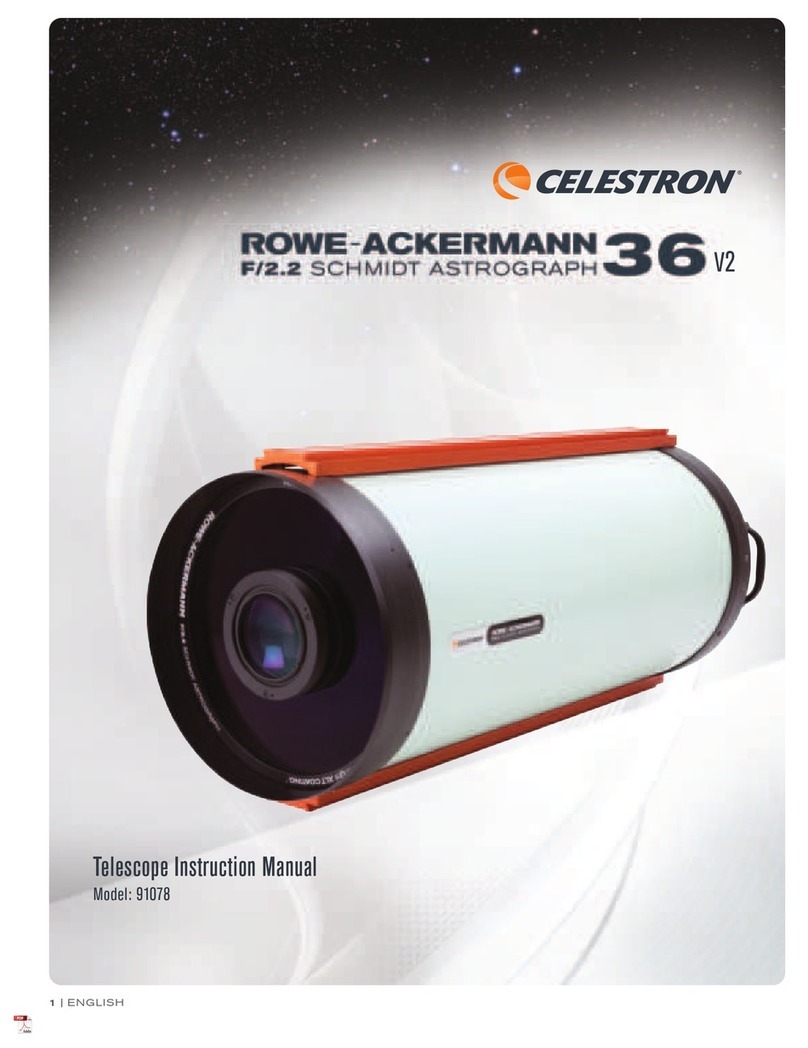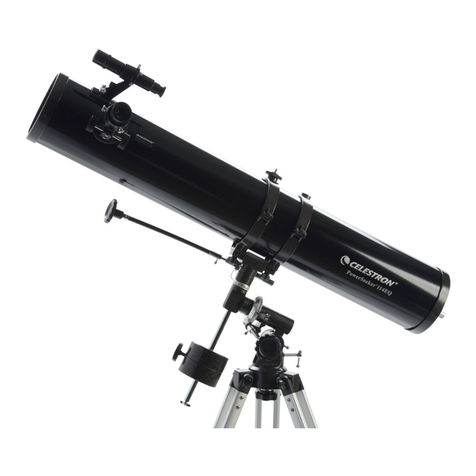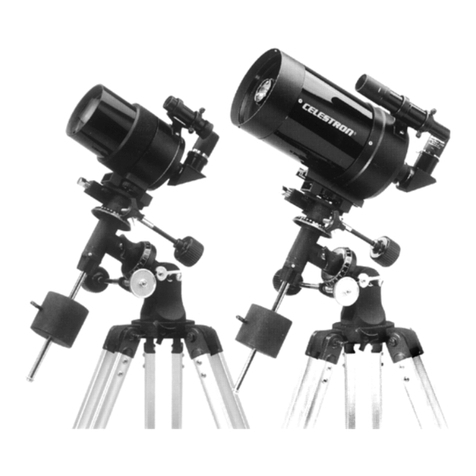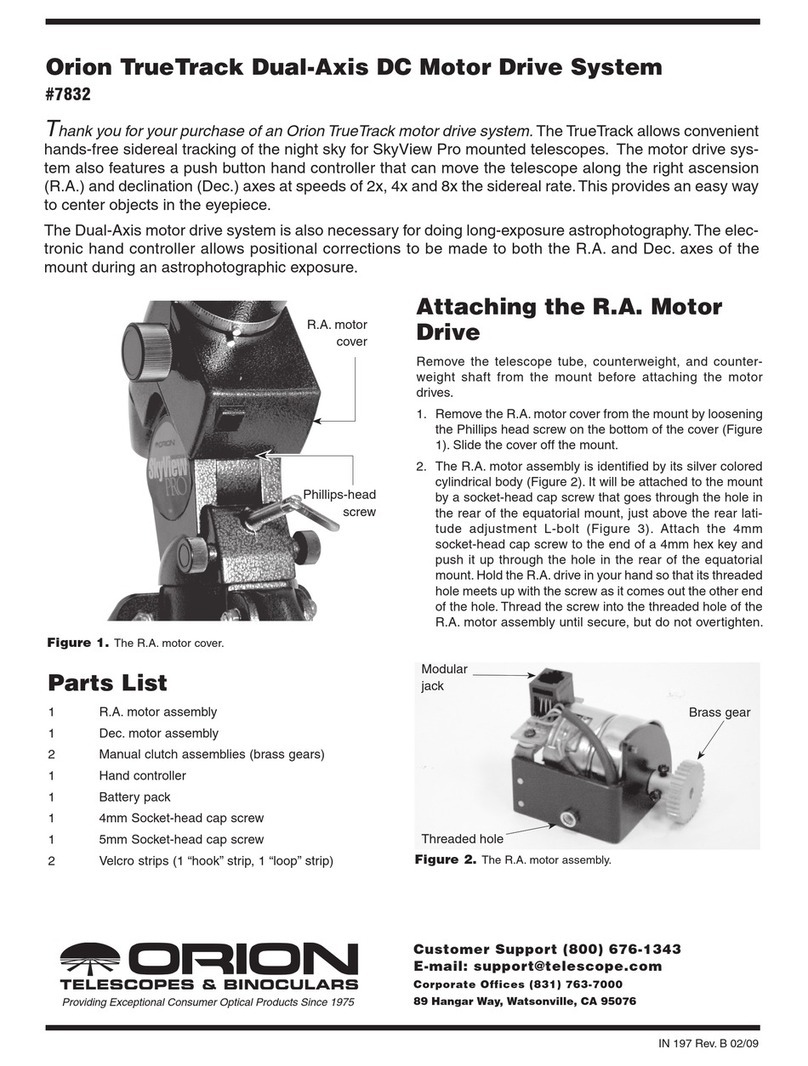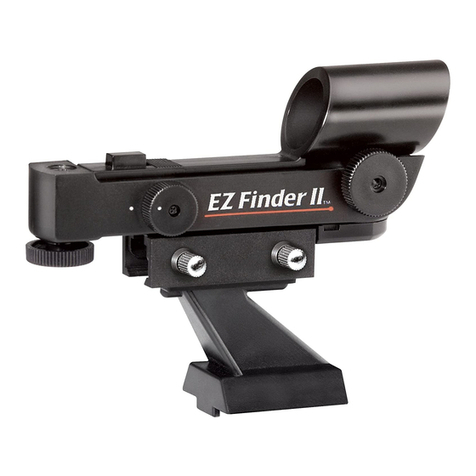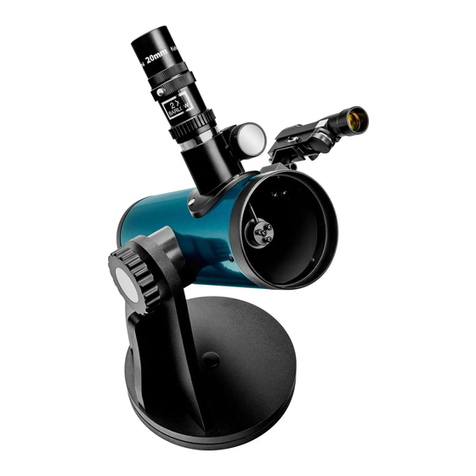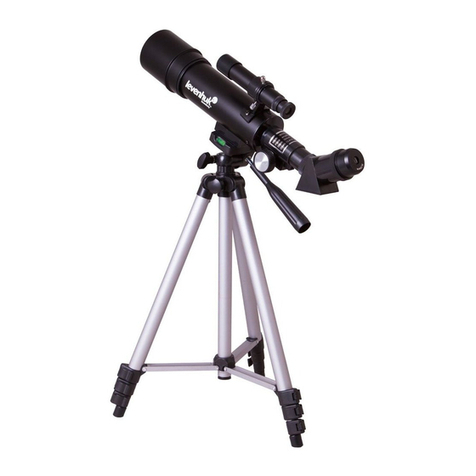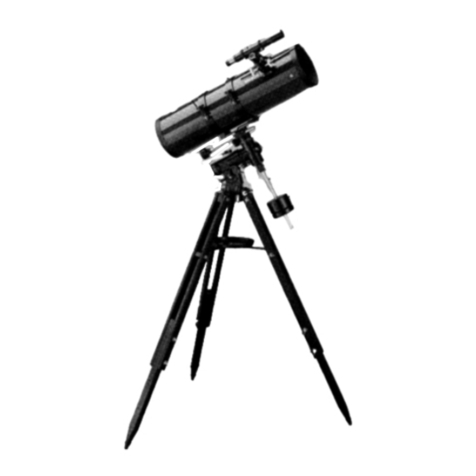
8
Eyepieces are commonly referred to by focal length, which is printed on the
eyepiecebarrel. The longerthefocal length(i.e., thelarger the number)the
lower the power. Conversely, the shorter the focal length (i.e., the smaller the
number)the higherthe magnification. Generally,you will use low to moderate
powerwhenviewing. Formoreinformationonhowtodeterminepower,seethe
sectionon“CalculatingMagnification.”
Inaddition,eyepiecesarealsoreferredtoby barrel diameter. These Celestron
refractorsuseeyepieceswith a barreldiameterof1-1/4".
To focus your telescope, simply turn either of the focus knobs located directly
opposite the finderscope. Turn the focus knob until the image is sharp. Once
sharp, turn the knob towards you to focus on an object that is closer than the
one you are currently observing. Turn the knob away from you to focus on a
moredistant objectthan the oneyou arecurrently observing.
Inadditionto understanding howthefocusing mechanism works,thereare a
fewfocusing hintsto rememberwhen usingany opticalinstrument.
• Avoid looking through glass. Glass found in household windows is optically
imperfect, and as a result, may vary in thickness from one part of a window
to the next. This inconsistency can and will affect the ability to focus your
telescope. In most cases, you will not be able to achieve a truly sharp
focus. In some cases, you may actually see a double image.
• Never lookacrossoroverobjectsproducingheatwaves. Thisincludes
asphalt parking lots on hot summer days or building rooftops.
• Hazy skies, fog, and mist can also make it difficult to focus when viewing
terrestrially. The amount of detail that can be seen under these conditions
willbegreatly reduced. Also,whenphotographing undertheseconditions,
the processed film may come out a little grainier than normal.
• When using your telescope as a telephoto lens, the split screen or micro-
prism focuser of the 35mm camera may “black out.” This is common with
all long focal length lenses. If this happens, use the ground glass portion of
yourfocusing screen. To achieve a verysharp focus,you may consider
usingafocusingmagnifier. Thesearereadilyavailablefromyourlocal
camerastore.
• Ifyou wearcorrective lenses(specifically glasses), youmay wantto remove
themwhenobservingwithaneyepieceattachedtothetelescope. However,
whenusing acamera, youshould always wearcorrective lensesto ensure
the sharpest possible focus. If you have astigmatism, corrective lenses
must be worn at all times.
Accurate alignment of the finder makes it easy to find objects with the tele-
scope, especially celestial objects. To make aligning the finder as easy as
possible, this procedure should be done in the daytime when it is easy to find
and identify objects. To align the finder:
1. Choose a target that is in excess of one mile away. This will eliminate any
parallaxeffectbetweenthetelescopeandfinder.
2. Point the telescope at your target and center it in the main optics of the
telescope. You may have to move the telescope slightly to center your
target.
Focusing
Aligning the Finder

